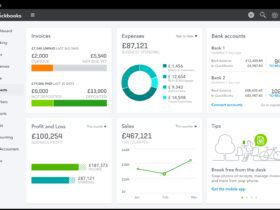Customer satisfaction can make or break your contractor business. A happy client not only brings in repeat business but also becomes a vocal advocate for your services, directly influencing your company’s growth. The link between customer satisfaction and an expanding clientele is too significant to ignore.
Know Your Customer Demographics
Knowing your customer demographics is essential for targeting your services effectively. This information can give you a clearer focus and help you allocate resources wisely. Instead of casting a wide net, you can focus on markets where you’re likely to get the most traction.
Collecting demographic data doesn’t have to be complicated. Simple surveys sent after a job completion can provide rich insights. You can also track customer interactions online, paying close attention to feedback and engagement to understand who finds your services appealing.
Once you have this information, it becomes easier to tailor your offerings. For example, if your data shows a significant number of clients are young homeowners, consider offering packages that solve their unique problems. This might involve energy-efficient home solutions or tech-friendly setups.
Conversely, if your customers tend to be older, they may prioritize safety or accessibility features. By knowing this, you can create offerings that solve these specific problems, making your services more attractive to this demographic.
Demographic insights can also inform your marketing efforts. Create promotional materials that speak directly to your identified customer groups. A targeted approach often leads to better engagement and, ultimately, higher revenue.
Effective Communication with Clients
Effective communication is one of the cornerstones of customer satisfaction in any service industry. Being timely in responding to client queries and concerns builds trust and adds a layer of professionalism to your business. A swift email or text message can go a long way to reassure customers that they are in capable hands.
There are multiple channels through which you can establish open and transparent communication. Traditional methods like face-to-face meetings and phone calls still hold value, especially for complex discussions. These can be supplemented by digital methods such as email updates or even specialized customer portals where clients can track the progress of their projects.
Language also plays a key role in effective communication. The jargon that makes perfect sense to you might sound like gibberish to a client who’s not in the industry. Translating complex terms into customer-friendly language helps you bridge this gap. For example, instead of saying, “we’re installing a 16 SEER HVAC system,” you might explain that you’re “putting in a highly energy-efficient heating and cooling system that will save them money on utility bills.”
Transparency in Pricing
Transparency in pricing can make or break a customer’s experience. No one likes to be hit with hidden costs that weren’t part of the initial discussion. When clients feel they’re subjected to unexpected fees, they might not only walk away from the deal but also leave negative reviews, affecting your business in the long run.
One way to combat this issue is to provide a detailed, written estimate upfront. This should include not just the cost of the materials and labor but also any other potential expenses that could crop up during the project. Make sure to highlight the contingencies that might result in extra costs.
A detailed estimate isn’t just about listing numbers; it’s also about explaining them. Walk your clients through the cost breakdown. If you’re using higher-end materials, for example, explain why that adds value to the project. This can give customers a clearer picture and help them feel more comfortable with the financial aspect of the job.
Even with a detailed estimate, sometimes unforeseen costs can come into play due to various factors like unexpected complications in the project. If this happens, prompt communication is crucial. Update the client as soon as you know of any changes and revise the estimate to reflect these new circumstances.
How to Handle Customer Complaints
Handling customer complaints effectively is a cornerstone of a successful business. Listening is the first critical step. Give your client the floor to express their concerns without interruption; it shows respect and lets you fully grasp the issue.
Offer solutions rather than excuses. Clients usually aren’t interested in why a problem happened; they want to know how you will fix it. A solution-oriented approach can not only resolve the issue but also turn a dissatisfied customer into a satisfied one.
Transparency is key in these situations. Always keep the customer in the loop about what steps you’re taking to remedy the situation. Use layman’s terms to explain the problem and how you address it.
Follow-up is essential, and it’s a step many businesses neglect. Even after you think you’ve resolved the issue, reach out to the client to confirm they’re satisfied with the solution. This step can give you valuable insights into the effectiveness of your complaint-handling processes.
If a complaint leads to a refund or some other form of compensation, make sure the process is smooth and quick. Delays can compound the customer’s frustration and may result in them losing faith in your business.
Always document complaints and the steps taken to resolve them. This not only aids in future conflict resolution but also helps you understand common pain points that you can work on to improve your service.
Conclusion
Every interaction with a client is an opportunity, whether it’s a chance to gain insights, build loyalty, or even turn around a negative experience. Emphasizing clear communication, transparent pricing, and attentive customer service will make those opportunities count. The better you understand your client’s needs and preferences, the more tailored and effective your service delivery can be.






























